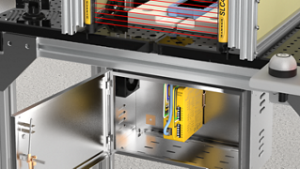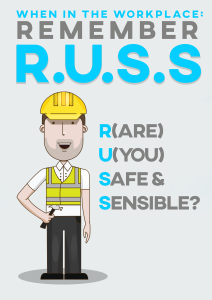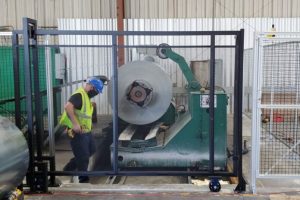Guards are barriers that protect workers from dangerous moving parts by preventing the entry of their body or clothing into the machine. Fixed guards are the preferred control method as they are a permanent fixture and do not depend on moving parts.

Further safeguarding devices may also be necessary.
Fixed Guard Types
The following types of guards can be fixed:
- Interlocking guards use a tripping mechanism to shut off the machine when a guard or cover is open or removed.

- Self-adjusting guards maintain protection at the point of operation by adjusting to allow varying sizes of stock to enter the machine, while still preventing reach-in by the operator.
Requirements:
- Fixed guards should be constructed so the user cannot reach through or around them.
- Guards should be fastened in a way that requires a tool for removal.
Safeguarding Device Types
Possible safeguarding devices include the following:
- Two-hand controls require that both hands be used for operation, preventing the operator from reaching into the point of operation.
- Light curtains are safeguarding devices that stop the machine when the light field is broken by any part of the operators’ body.
- Pressure-sensitive mats detect a person’s presence and stop the machine.



















